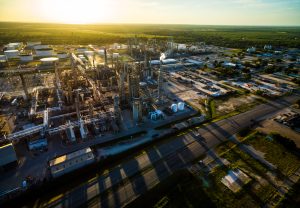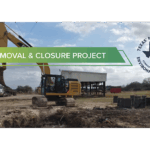
In today’s rapidly evolving world, environmental protection and sustainability have become increasingly important. One crucial aspect of this is the assessment of potential environmental risks and contamination on properties. In Temple, Phase 2 Environmental Site Assessments play a vital role in ensuring that the land is safe for use and preventing any adverse impact on human health or the environment.
Understanding the Importance of Phase 2 Environmental Site Assessments
Phase 2 Environmental Site Assessments are a critical step in the process of assessing environmental risks on a property. These assessments are typically conducted after the completion of a Phase 1 Environmental Site Assessment, which identifies any potential environmental concerns based on historical research and site inspections.
Phase 2 Assessments provide more comprehensive and detailed information about the property’s environmental conditions. They involve the collection and analysis of soil, groundwater, and/or air samples to determine the presence and extent of contamination. This information is crucial for making informed decisions on property transactions, land use planning, and remediation efforts.
The Role of Phase 2 Assessments in Environmental Protection
Phase 2 Environmental Site Assessments play a crucial role in environmental protection. By identifying and quantifying the contamination present on a property, these assessments help assess potential human health risks and prevent further degradation of the environment.
Furthermore, Phase 2 Assessments provide valuable data that can guide remediation efforts. By understanding the type, concentration, and distribution of contaminants, environmental professionals can develop tailored and effective strategies for cleanup and mitigation.
Key Elements of a Phase 2 Environmental Site Assessment
A comprehensive Phase 2 Environmental Site Assessment involves several key elements that collectively provide a thorough understanding of the environmental conditions on a property.
The first step is the selection of sampling locations. This is based on the findings of the Phase 1 Assessment, as well as a site-specific assessment of potential sources and pathways of contamination. It is essential to identify areas of concern accurately.
Once the sampling locations are determined, samples are collected from soil, groundwater, and/or air. These samples are then sent to accredited laboratories for analysis. The selection of appropriate analytical methods and strict quality control measures ensures accurate and reliable results.
The analysis of samples provides crucial information about the presence and concentration of contaminants. It also helps identify the potential impact on groundwater, ecosystems, and human health. This data allows environmental professionals to develop a comprehensive understanding of the risks associated with the property.
The final step of a Phase 2 Assessment is the interpretation and evaluation of the assessment findings. This involves comparing the results to relevant regulatory standards and guidelines to determine the level of contamination and the potential risks.
The Process of Conducting a Temple Phase 2 Environmental Site Assessment
Conducting a Temple Phase 2 Environmental Site Assessment involves several essential steps that ensure a comprehensive and accurate evaluation of environmental conditions. These steps include:
Initial Site Inspection and Data Collection
The assessment process begins with an initial site inspection, where environmental professionals visually inspect the property and identify potential sources and pathways of contamination. They also collect additional data, such as historical records and available environmental databases, to gain a comprehensive understanding of the property.
Laboratory Testing and Analysis
Following the initial site inspection, environmental professionals collect samples from designated locations on the property. These samples undergo laboratory testing and analysis, which involves a series of scientific procedures and evaluations to determine the presence and concentration of contaminants.
The laboratory analysis may include various techniques, such as gas chromatography, mass spectrometry, or heavy metal analysis, depending on the nature of the suspected contaminants. Quality control measures, including blank and duplicate samples, ensure the accuracy and reliability of the results.
Evaluation of Assessment Findings
Once the laboratory analysis is complete, the environmental professionals interpret and evaluate the assessment findings. They compare the results with relevant regulatory standards, guidelines, and risk assessment criteria. This evaluation determines the level of contamination and the associated risks on the property.
The assessment findings are then summarized in a clear and concise report, which includes detailed information about the site inspection, sampling and analysis methods, results, and conclusions. This report serves as a valuable resource for property owners, developers, regulators, and other stakeholders involved in decision-making processes.
Potential Challenges in Temple Phase 2 Environmental Site Assessments
While Temple Phase 2 Environmental Site Assessments are crucial for environmental protection and risk management, they can present several challenges. Environmental professionals need to be aware of these challenges and develop strategies to overcome them effectively.
Dealing with Inaccessible Areas
In some cases, accessing certain areas of a property can be challenging due to physical barriers or safety concerns. These inaccessible areas may contain potential sources of contamination, and their assessment is crucial to obtaining a comprehensive understanding of the property’s environmental conditions.
When faced with inaccessible areas, environmental professionals use innovative techniques such as remote sensing, geophysical surveys, or drone-based assessments. These methods allow them to obtain the necessary data without compromising safety or accuracy.
Addressing Contaminant Migration
Contaminant migration, where pollutants spread from one area to another, can complicate the assessment process. Understanding the extent and direction of migration is essential for evaluating the overall site conditions accurately.
To address contaminant migration, environmental professionals employ techniques such as groundwater modeling, soil vapor surveys, and advanced sampling strategies. These methods help identify the migration pathways and assess the potential risks associated with the movement of contaminants.
Overcoming Limitations in Sampling and Analysis
Sampling and laboratory analysis are fundamental components of Phase 2 Environmental Site Assessments. However, these processes have inherent limitations that need to be considered and addressed.
For example, soil samples may not be representative of the entire property due to variations in soil composition and contamination distribution. To overcome this limitation, environmental professionals employ statistical sampling techniques and collect samples from multiple locations to ensure a comprehensive understanding of the property.
Laboratory analysis also has its limitations, including the potential for false positives or negatives. Quality control measures are implemented to minimize these errors, and confirmatory testing may be conducted to validate the initial results.
The Impact of Temple Phase 2 Environmental Site Assessments on Property Value
Temple Phase 2 Environmental Site Assessments can have significant implications for property value and influence various aspects of property transactions and development.
Influence on Property Transactions
One of the immediate impacts of Phase 2 Assessments is on property transactions. Buyers and lenders often require these assessments to identify potential environmental risks before making investment decisions.
The assessment findings can influence the negotiation process and the final sale price of the property. If significant contamination is identified, potential buyers may request price adjustments or opt-out of the transaction entirely. Conversely, properties with favorable Phase 2 Assessment results may attract a higher value due to their lower environmental risks.
Implications for Property Development and Land Use
Phase 2 Environmental Site Assessments also play a crucial role in property development and land use planning. The results of these assessments determine the feasibility and viability of development projects.
If significant contamination is discovered, developers may need to implement remediation and mitigation measures before proceeding with their plans. This can add additional costs and time to the development process. On the other hand, properties with minimal or manageable contamination may be more attractive for development.
Future Perspectives on Temple Phase 2 Environmental Site Assessments
The field of environmental site assessments is continually evolving, driven by technological advancements and changes in regulations and standards. These future perspectives have the potential to enhance the accuracy, efficiency, and overall effectiveness of Temple Phase 2 Environmental Site Assessments.
Technological Advancements in Environmental Assessments
Advancements in technology offer new opportunities for improving the assessment process. Innovations such as remote sensing techniques, drone-based assessments, and advanced data analysis tools can provide more accurate and reliable results while reducing the time and cost associated with traditional site assessments.
Furthermore, the integration of Geographic Information Systems (GIS) and Environmental Information Management Systems (EIMS) allows for better data visualization, analysis, and decision-making. These technological advancements make assessments more accessible and help streamline the entire site assessment process.
Regulatory Changes and Their Impact on Assessments
As our understanding of environmental risks and standards evolves, so do the regulations governing site assessments. Future perspectives on Temple Phase 2 Environmental Site Assessments include changes in regulatory frameworks that aim to further protect the environment and human health.
Environmental professionals need to stay informed about these regulatory updates and adapt their assessment practices accordingly. Compliance with new regulations ensures that assessments remain comprehensive, accurate, and aligned with the prevailing environmental standards.
In Conclusion
Temple Phase 2 Environmental Site Assessments are instrumental in evaluating environmental risks and preventing the adverse impact of contamination on human health and the environment. By providing comprehensive data on contamination levels and potential risks, these assessments enable informed decision-making in property transactions, land use planning, and remediation efforts.
While Temple Phase 2 Environmental Site Assessments face challenges such as inaccessible areas, contaminant migration, and limitations in sampling and analysis, environmental professionals employ innovative strategies to overcome these obstacles. The impact of these assessments extends beyond property transactions, influencing property development projects and land use planning.
As technology advances and regulations evolve, the future of Temple Phase 2 Environmental Site Assessments holds great promise. Technological advancements and regulatory changes pave the way for more accurate, efficient, and sustainable assessment practices that enhance environmental protection and mitigation efforts.
Understanding the complexities and challenges of Phase 2 Environmental Site Assessments is crucial for any business or property owner. If you’re ready to ensure your property is compliant, safe, and sustainable, look no further than ESE Partners. Our team of experts is equipped to guide you through the assessment process with innovative solutions tailored to your unique environmental challenges. We’re committed to moving your business forward responsibly and efficiently. Request A Proposal today and partner with a firm that values opportunity, community, and integrity.








